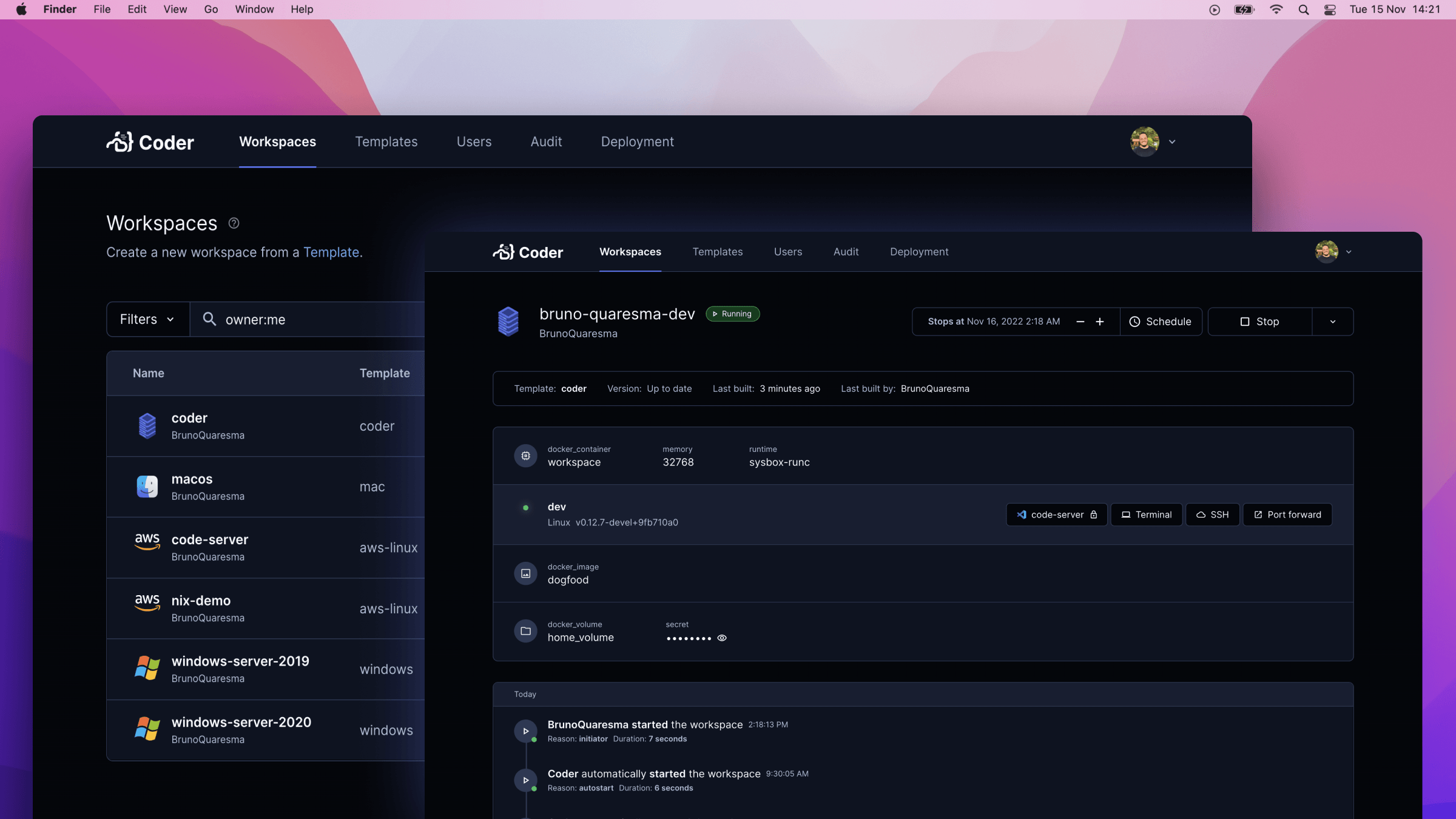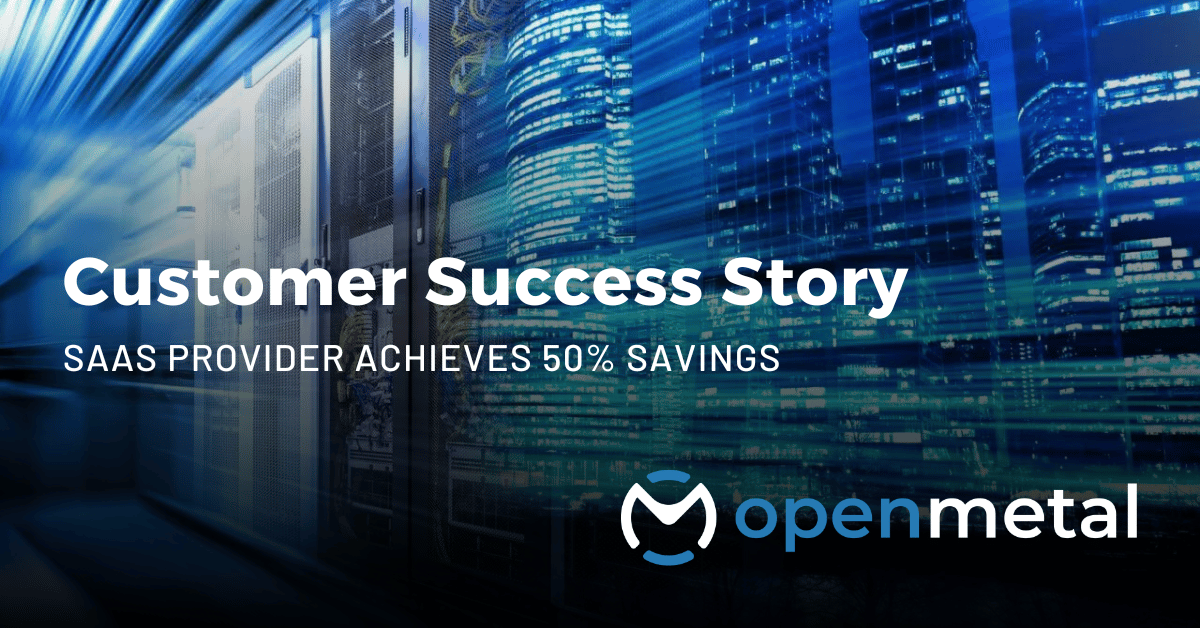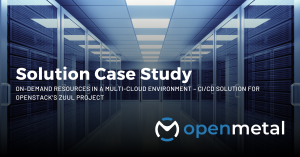OpenMetal Cloud Customer Success Story
Coder is a technology company that offers a solution to cloud-based development environments. They enable developers to use consistent, containerized environments, allowing them to write, test, and deploy code from any device, anywhere.
By moving development environments to the cloud, Coder addresses the “it works on my machine” issue that many development teams face, ensuring consistent, reproducible builds. This approach not only streamlines the development process but also enhances collaboration among developers, as they can access and share the same environment regardless of their physical location or the device they are using.
OpenMetal helped Coder find:
- Cost-Effective Product Development
- Seamless Integration with Development Tools
- Scalable Resources for Testing
- Data Security During Development
- Consistent Development Experience
Coder + OpenMetal: Seamless Dev Evolution
Experience the Future: Coder on OpenMetal – Where Cloud Development Meets Ultimate Flexibility.
The Vision
At OpenMetal, we’ve always prioritized understanding and aligning with the objectives of our partners. With Coder, this synergy becomes evident through their well-defined goals for their development platform:
- Cost Savings: Coder seeks to provide its users with optimal value. By utilizing our cost-effective infrastructure, they ensure developers gain maximum efficiency without compromising budget.
- Security: Recognizing the importance of data protection, Coder aligns with our robust security protocols to offer a fortified environment for development.
- Ease of Deploying OpenStack: Simplified processes are central to Coder’s approach. Our collaboration streamlined their deployment of OpenStack, reducing complexities and accelerating setup times.
- Resource Availability: To eliminate potential developmental constraints, Coder harnesses our abundant resources, ensuring developers have access to essential tools whenever required.
- Private Cloud Autonomy: Understanding the value of flexibility, Coder leverages our private cloud solutions, allowing their users a tailored environment with greater control.
In essence, our partnership with Coder is rooted in their vision to offer a superior, seamless, and efficient development experience, and we’re proud to support their journey.
The Solution
An OpenMetal Standard Cloud Core + Connected to Coder
OpenMetal provisioned Coder with our standard cloud configuration, fortified with the power of OpenStack. This configuration, a testament to our expertise, is one of our flagship deployments. It offers the flexibility to run up to 68 VMs, each endowed with 4GB RAM and 2vCPUs — a setup tailor-made for developer workspaces managing light workloads. For developers tackling more intensive tasks, the system seamlessly scales to support 34 VMs, each boasting 8GB RAM and 4vCPUs.
Following the successful cloud deployment, Coder’s team demonstrated their technical agility by crafting a specialized Terraform playbook. This tool was specifically designed to invoke resources within OpenStack, ensuring its smooth integration into the broader Coder ecosystem. The synergy was evident: while OpenMetal deftly managed the complexities of OpenStack deployment, Coder zeroed in on its core strength — seamless system integration.
Today, Coder’s OpenStack cloud serves as an invaluable asset, mirroring the varied experiences of their end-users. It stands as a robust platform for vetting novel functionalities and gauging their efficacy. The collaboration has not only met but surpassed expectations, prompting Coder to diversify and deepen their engagement with OpenStack-powered use-cases.
Why Choose Private Cloud?
In the evolving landscape of software development, the shift toward private cloud environments has become a strategic move for many organizations. Here’s why developing on a private cloud, like the one powered by OpenMetal, can be a game-changer for your development team:
Cost Savings
The first and foremost advantage of using a private cloud is cost efficiency. With a pay-as-you-go model, you only pay for the resources you use. This eliminates the financial burden of maintaining on-premises hardware, which can be both expensive and underutilized. OpenMetal’s infrastructure, with its competitive pricing, ensures that you’re getting the most out of every dollar spent.
Optimized Resource Allocation
Private clouds allow for more precise control over your resources. Unlike public clouds, where resources are shared among multiple tenants, a private cloud means dedicated resources for your development needs. This ensures that your workloads are not competing for resources, leading to better performance and stability. OpenMetal’s platform allows for easy scaling and management of resources, ensuring that your developers have what they need, when they need it.
Enhanced Security
When it comes to development, security is non-negotiable. Private clouds offer a more secure environment since your data is isolated from the public internet. OpenMetal takes this a step further by providing a secure, compliant, and private infrastructure that meets the stringent requirements of data-sensitive applications. This means you can develop and test in an environment that mirrors your production setup without compromising on security.
Compliance and Control
For industries regulated by strict data protection laws, private clouds offer a compliant solution. With OpenMetal, you have the assurance that your infrastructure adheres to industry standards, and you maintain control over the compliance and governance of your environments.
Customization and Flexibility
Private clouds provide the flexibility to customize your environment to your specific needs. Whether it’s custom networking configurations, specific hardware requirements, or unique storage needs, OpenMetal’s private cloud solutions are designed to be tailored to the precise demands of your development projects.
Choosing a private cloud for development isn’t just about following a trend; it’s about making a strategic decision that aligns with your organization’s need for cost efficiency, resource optimization, security, and flexibility. OpenMetal’s private cloud offerings empower you to leverage these benefits while keeping your focus on innovation and growth.
Continued Partnership
OpenMetal maintains a strong partnership with Coder’s product development team, collaborating to enhance their workloads and maximize the efficiency of their infrastructure.
Coder has indicated their intention to broaden their utilization of OpenStack. We eagerly anticipate and stand prepared for this next phase of collaboration.
We take care of the hardware and OpenStack so their team can focus on innovating and developing cutting-edge software solutions without the hassle of managing infrastructure.
Additional Case Studies
Read about additional OpenMetal customer successes and case studies by exploring these resources:








































